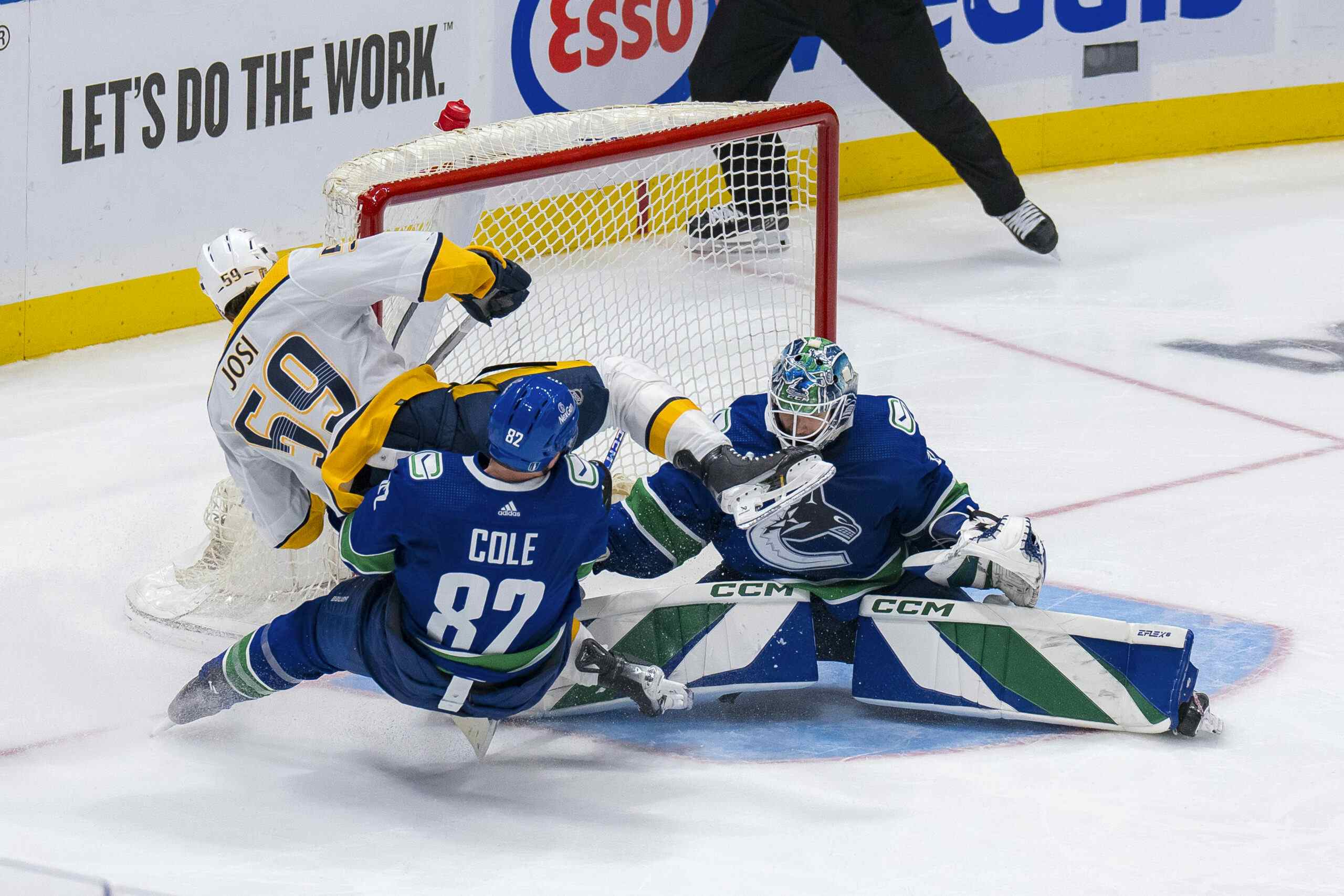Canucks Army Year in Review: Jacob Markstrom
7 years ago
After clearing waivers last year and spending the majority of the 2014-15 season in Utica, Jacob Markstrom was signed to a two-year contract prior to the 2015-16 season with hopes that he would be finally able to translate his AHL success to the NHL. The Canucks were so confident in the young goaltender that they traded Eddie Lack to Carolina to open up the backup spot.
Due to an injury suffered in training camp, the Swedish netminder only made four appearances before December 1st and had a pedestrian .904 SV% in those games. But over the rest of the season, he slowly moved from the backup role to splitting the games 50/50 down the stretch. As we will see lower in the stats portion, Markstrom did suffer from inconsistency throughout the season. His numbers obviously suffered from the team’s performance, and that is particularly apparent in March and April. It’s hard to know exactly how much was Markstrom’s own regression or the Canucks falling down the standings.
Markstrom ended the season with a record of 13-14-3, and likely would’ve been better if the Canucks were able to score some goals. For example, during Markstrom’s eleven starts in March and April, the Canucks averaged 1.72 GF/PG, which included being shut out three times.
Crunching Numbers
5v5 adjGSAA/60 (“Mercad”) chart – 2015-16:

5v5 adjusted goals saved above average per 60 minutes. The stat determines how much better, or worse, a goalie has performed against the 5v5 location adjusted shots (high danger, medium danger, low danger) he has faced than if a goalie with NHL average save% in each danger zone had faced the same shots over a 60-minute timeframe. More on the statistic can be found here.

Markstrom was largely inconsistent throughout the season. This inconsistency hit hardest in early January, his playing time decreased as Miller outperformed him, and he effectively bottomed out in March and April, aside from one strong performance on 3/22 where he posted a +2.74 5v5 adjGSAA/60 that saved him from being much lower on the chart.
His 10-game rolling avg 5v5 adjGSAA/60 helps show his progression over the season and exactly the above trend. That chart is colored by his 10-game rolling avg 5v5 shots against per 60. There isn’t a distinct trend, but he seemed to be at his worst when getting less work on a nightly basis.
AAA%

Above Average Appearance %. This simply is the percentage of his appearances where he has performed above NHL average 5v5 adjGSAA/60 (better than 0). Again, this reveals his rocky and inconsistent season. He was mostly below average overall. Meanwhile, Miller was right at 50% AAA%, but he tended to perform quite a bit above average and rarely well below average. This is why he appears higher on the 5v5 adjGSAA/60 chart.
Conclusion
Obviously, things could change, and with more consistency to his game, Markstrom appears to be on the right track to becoming an NHL goalie. The Canucks should be making the transition to Markstrom being the starter this upcoming season. Canucks management and coaching staff have suggested that the starting job is ‘up for grabs’ for whoever of Markstrom and Ryan Miller want to seize the opportunity.
With the long-term health of the organization in mind, the spot should be Markstrom’s by December. With hopes that he will start an upward trajectory, Markstrom needs to get in as many minutes as possible.
The Gavle, Sweden native will turn 27 in January, so now is the time for him to seize the starting role. If he can do so, the Canucks will have a once highly touted prospect in his prime. If this all goes to plan and given that he would only have one year as a starter, Canucks would then be able to get Markstrom at a fairly reasonable rate next summer.
Regardless of his performance, at this point, you can’t help but think of Markstrom as found money. He was placed on waivers last year and almost looked to be a lost cause but after a fantastic AHL season last season, there was renewed hope that there may be something here. Markstrom then came in and provided, reasonably stable, albeit below league average, goaltending for a team with few bright spots. If he can become an NHL starter for the Canucks, you have to view that as a win.
Huge thanks to Nick Mercadante for his help with the ‘crunching numbers’ of this year in review. You can follow him on twitter here.





